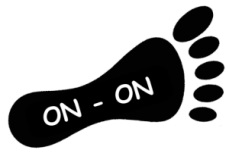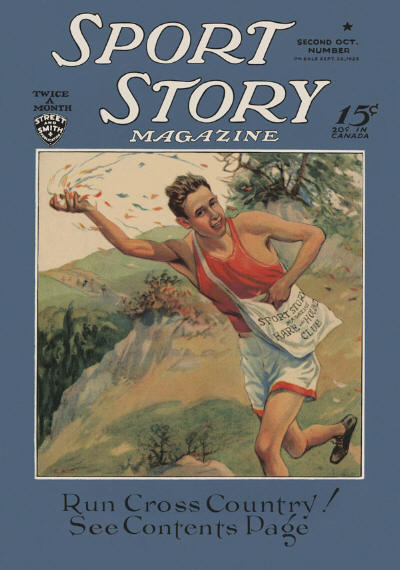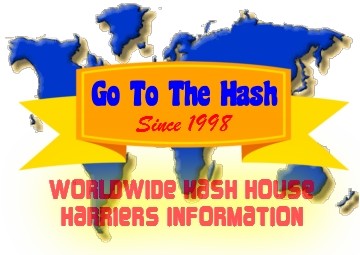|
A Historical Review of the Hash
House Harriers
Read the whole library of HHH historical
articles by Hazukashii,
In The
Spotlight. |
|
The history of such an underground organization as the Hash House Harriers (a.k.a. HHH or Hashing) is hard to pin down, continued research uncovers various items of interest. The single greatest effort of hash history was researched and written by Tim "Magic" Hughes. More history can be reviewed at the links below.
Background . . . Harrier running clubs (synonymous with other running clubs (e.g. Crowborough Runners, Egdon Heath Harriers, Striders of Croydon, Thrift Green Trotters) date back to the early to mid 19th Century in the United Kingdom, as a follow on to the children's game of paper chase (a.k.a Hare and Hounds), that they played in Rugby schools. As these young men became older, they began forming these harriers clubs to expand their fun. Various accounts date back well before 1867, but the oldest known organized club is the Thames Hare and Hounds (which was actually formed by the Thames Rowing Club to stay fit during the winter). Eventually, competition increased, and regional and national cross country associations were established. As with many sporting competitions, wagering soon followed, and cross country races were replaced by contained circuits on horse racing tracks. This better suited the odds makers, but removed the free flow of country running, and also no longer required paper. Fortunately, some of these clubs remained more for fun, and stuck to the old cross country fashion. One club that still runs the old traditional cross country trails is the Cheshire Tally Ho Hare and Hounds Club running since 1872. As the British Empire expanded through Asia, they took the sport of rugby as well. Many such teams established harrier clubs to stay fit in the off season, as well as for a fun social and fitness pastime. Without the competition aspect that evolved back in the United Kingdom, these harrier clubs tended to be less serious. Hunting . . . The premise of the game of paper chase relate back to the basic fundamentals of hunting. Fox hunting or Hare hunting, where dogs were used to chase down the prey. To further elaborate on this point, take a look at this article on Hare and Hounds from Harper's Weekly dated May 23, 1874. As you can see from this Sport Story Magazine cover dated 22 Oct 1929, Hare and Hound clubs could even be found in the United States before WWII.
Bring on the "Hash House" Harriers . . . Several harrier clubs had formed up in South East Asia dating back as early as 1913 (e.g. Springett Harriers, Kinta Harriers, Kuala Lumpur Harriers, etc). In 1938, a group of British expats (as far as I can tell, only G was actively participating as a colonial military officer, which were simply "Volunteers." Both G and Torch were accountants by profession), established the "Hash House" Harriers, that was not only based on maintaining a level of fitness, but also a robust social aspect. The Hash House Harriers is a less competitive offshoot of Harrier clubs, and was founded in Kuala Lumpur, the capitol of the Federated States of Malaya (now Malaysia). The name Hash House comes from the nickname of the cafe on the grounds of the Selangor Club. While harrier type clubs continue to this day, the offshoot Hash House Harriers (HHH or H3) has bred a following all its own throughout the world. Alberto Esteban Ignacio Gispert, known to his friends as "G" is credited as the original founder of the Hash House Harriers (a.k.a. Mother Hash), along with Frederick "Horse" Thomson, Ronald "Torch" Bennett, Eric Galvin, H.M. Doig, Morris Edgar, John Barret, and Cecil Lee. Mother hash celebrated run # 100 on 15 Aug 1941, and had run a total of 117 runs, but due to the spread of the Japanese Empire, further activity was suspended on 12 Dec 1941. The first rebirth run was held in Aug 1946, as the world recovered from the war. The Premise of Hashing . . . The only thing required to have a Hash Run is a hare to set a trail with paper, flour, sawdust, chalk, etc. or a combination of these items. Length varies, but a reasonable trail would be between 7-12 Kms, preferably over a cross country terrain, but many clubs run through city streets and back alleys. Trail can be set live, meaning the hare gets a 10-15 minute head start, or set dead, with the trial being completed prior to the pack setting off. With the trail being set, all that is left is a willing pack to make chase. The shear brilliance of Hashing is the complete austerity of it. You only need something to mark the trail, a hare to set the trail, and someone to follow. What makes hashing a bit different is the reverence to partaking some cold beer, ginger beer, and various other refreshments, after running, jogging, walking a fun cross country trail. In
1949, the city of Kuala Lumpur began requiring clubs of all kinds to register
their activity. While a common theme of hashing is "there are no rules,"
the club registration (drafted in 1950, and approved on 9 Feb 1951) was the original "Rules"
or at least guidelines. Written
with the wry jest of a good hasher, the objectives of the Hash House Harriers were
listed as: Initial Growth, and Into a World Wide Phenomena . . . For almost 25 years, it was believed that the second oldest hash club was started in 1947 in the Italian Riviera (but turned out to be a great hash hoax), called the Bordighera H3. The first validated branch club was formed in 1962 in Singapore, and has been dubbed "Father Hash." After the hash appeared in Singapore, it was not long before several others started in Borneo including Brunei and Kuching. By 1965 the first 10 clubs existed, and the numbers continued to grow quickly. Clubs have continued to form (and fold) in the years since, and while an exact count is very difficult to pinpoint, my latest analysis concludes there are between 1325 and 1350 active hash clubs (as of May 2023), running in 136 countries (exceptions currently include North Korea, San Marino, Monaco, Iran, Liechtenstein, Venezuela, and a handful of others). Genealogy . . . The Hash Genealogy project provides a historical listing of all known hash clubs, and was created by Bill "Tumbling Bill" Panton. Tumbling Bill (TB) ran his first hash in 1954, but did not take to it initially due to an already active schedule. TB would return to hashing in 1958, and become a prolific hasher for the rest of his life. As the sphere of hash clubs expanded, and hashers started traveling to events at other clubs, TB began collecting club contacts by actively searching them out. Early listings show 41 clubs by March 1974, 54 by December 1974, and by the end of 1975, he had amassed a listing of 68 clubs in 23 countries. Contacts for currently active HHH clubs around the world are maintained by a small group of regional webmasters. The following list shows the first hash club on each continent:
This audio interview with Hazukashii from 2021 discussed the basics of the Hash House Harriers. This video is a great historical snapshot of hashing, narrated by the late John Duncan. It is an old video that was created by Cathay Pacific as in-flight entertainment back in the early 1990s.
|
|
-Flying Booger -Hazukashii -Shakesprick Recommend another hash history website. |


